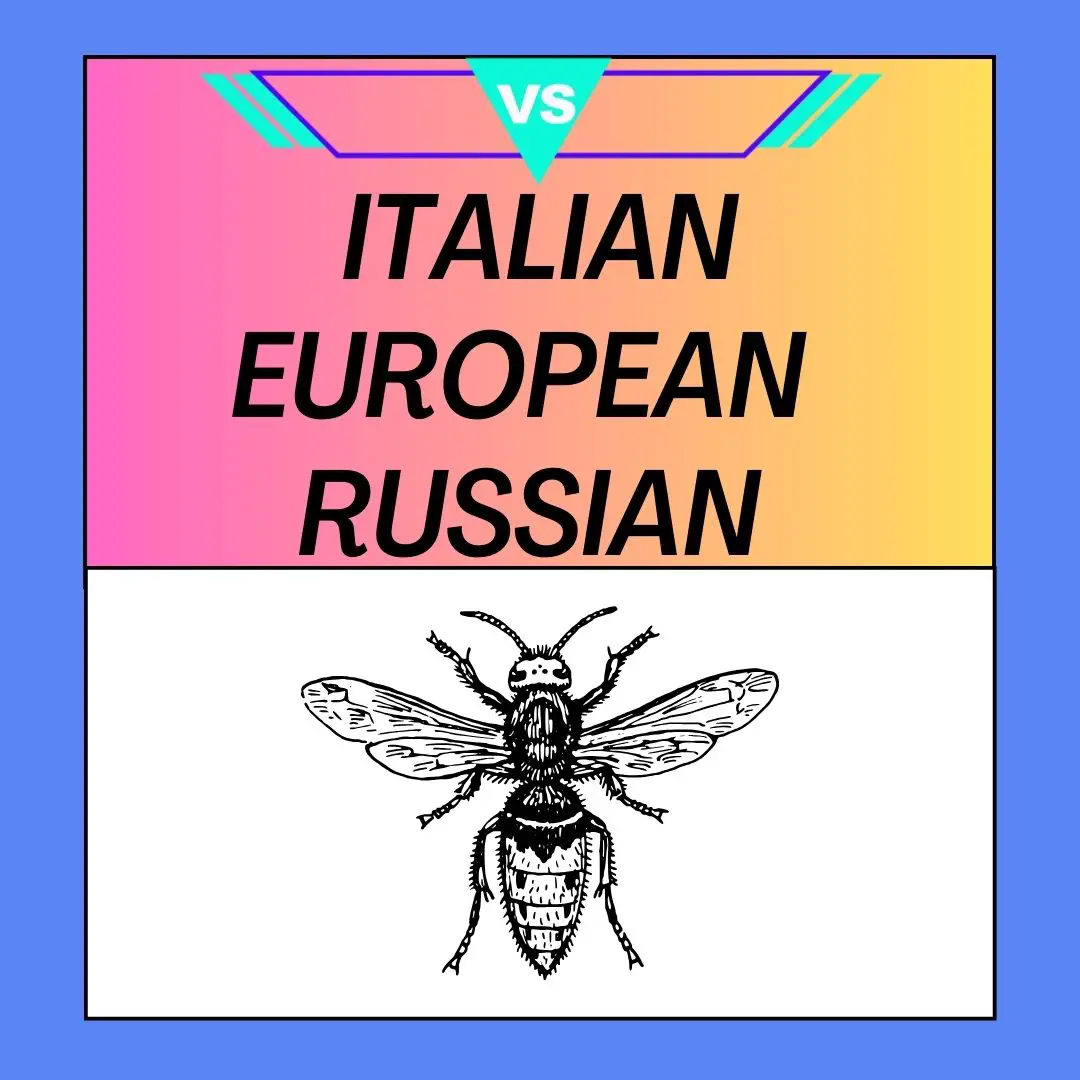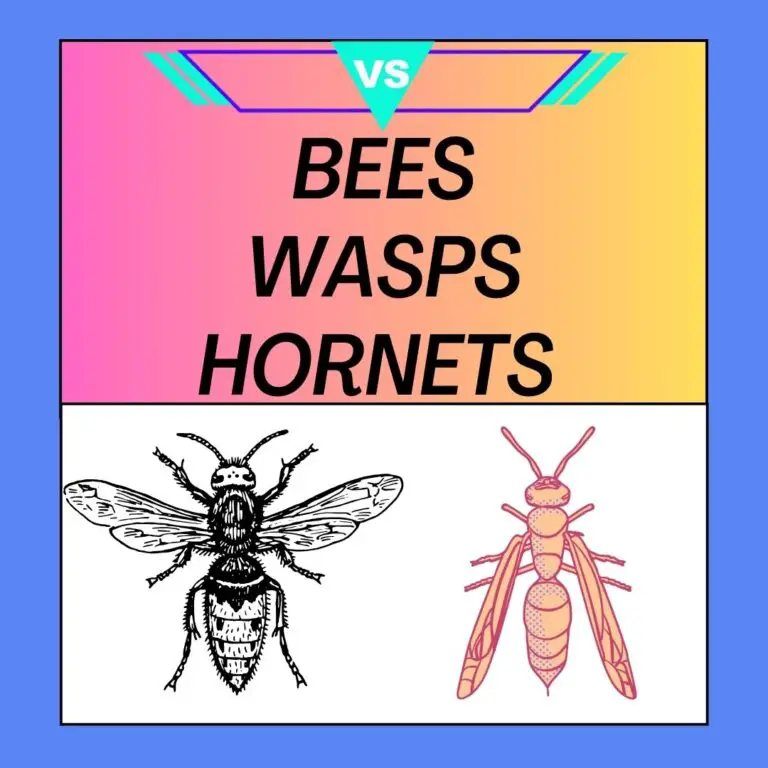
Bees play a vital role in pollinating crops and wild plants, making them essential to agriculture and ecosystems. Among the various bee subspecies, Italian, European, and Russian bees are some of the most well-known. While they all share similarities as honey-producing insects, there are significant differences between these subspecies in terms of behavior, characteristics, and adaptability to various environments.
Italian Bees (Apis mellifera ligustica):
Origin: Italian bees, as the name suggests, originate from Italy. They were introduced to the United States in the mid-1800s.
Characteristics:
- Color: Italian bees are known for their distinctive yellow color with dark bands on their abdomen.
- Behavior: They are known for their gentle and docile nature, making them a favorite among beekeepers.
- Honey Production: Italian bees are prolific honey producers and are known for their ability to forage efficiently.
- Overwintering: They are less inclined to rob honey from neighboring colonies during food shortages.
European Bees (Apis mellifera mellifera):
Origin: European bees, often referred to as the European dark bee, are native to Europe and are one of the oldest subspecies of honeybees.
Characteristics:
- Color: European bees are darker in color, with a nearly black appearance.
- Behavior: They are known for their adaptability to harsher climates, especially cold winters.
- Honey Production: While they produce less honey compared to Italian bees, their hardiness in cold climates is their primary advantage.
- Overwintering: European bees have developed a strong ability to overwinter successfully.
Russian Bees (Apis mellifera var.):
Origin: Russian bees, also known as Russian honeybees, were originally sourced from the Primorsky Krai region in Russia.
Characteristics:
- Color: They are similar in appearance to European bees, with darker coloring.
- Behavior: Russian bees are known for their resistance to Varroa mites, a major threat to bee populations.
- Honey Production: They are moderate honey producers but are valued for their mite resistance.
- Overwintering: Russian bees have excellent overwintering abilities, often requiring less winter feeding.
Primary Differences:
- Color: Italian bees are notably yellow with dark bands, while European and Russian bees are generally darker, with European bees being almost black.
- Behavior: Italian bees are known for their gentle nature, making them a preferred choice for beginners. European bees are hardy and well-suited to cold climates, while Russian bees stand out for their Varroa mite resistance.
- Honey Production: Italian bees are prolific honey producers, while European and Russian bees produce moderate amounts but have other valuable traits.
- Overwintering: European and Russian bees have strong overwintering capabilities, with Russian bees requiring less winter feeding due to their mite resistance.
Italian Bees vs. Carniolan Bees
Beekeeping enthusiasts often face the choice between different bee breeds when establishing or expanding their hives. Two popular options are Italian bees (Apis mellifera ligustica) and Carniolan bees (Apis mellifera carnica). Each bee type has its own characteristics, advantages, and considerations. Here’s a comparison to help beekeepers make an informed decision:
Italian Bees (Apis mellifera ligustica):
1. Temperament:
- Italian bees are known for their gentle and docile temperament. They tend to be less defensive and are less likely to sting compared to some other bee breeds. This makes them an excellent choice for beginner beekeepers and those who prefer working with less aggressive bees.
2. Honey Production:
- Italian bees are renowned for their prolific honey production. They are efficient foragers and can build up colony populations quickly in favorable conditions. Their focus on honey production makes them a preferred choice for beekeepers aiming for high honey yields.
3. Disease Resistance:
- Italian bees may be more susceptible to certain diseases and pests, such as Varroa mites. This susceptibility may require more vigilant monitoring and management to maintain hive health.
4. Overwintering:
- Italian bees can overwinter successfully, but they may require more winter feeding in colder climates.
Carniolan Bees (Apis mellifera carnica):
1. Temperament:
- Carniolan bees are known for their calm and non-aggressive nature. They exhibit less defensive behavior and are less prone to stinging, making them suitable for beekeepers who value a gentle bee temperament.
2. Winter Survival:
- Carniolan bees have a reputation for excellent overwintering abilities. They can conserve resources efficiently and build up brood production quickly in spring, which is advantageous in regions with long winters.
3. Swarming Tendency:
- Carniolan bees may have a slightly higher propensity to swarm compared to Italian bees. Beekeepers should monitor their colonies closely during the swarming season to prevent colony division.
4. Brood Rearing:
- Carniolan bees tend to curtail brood rearing during periods of nectar dearth or adverse conditions. This behavior helps conserve hive resources.
Key Considerations:
1. Climate:
- Italian bees are adaptable and thrive in a range of climates. Carniolan bees, with their excellent overwintering ability, are particularly well-suited to regions with cold winters.
2. Beekeeper Preference:
- The choice between Italian and Carniolan bees often comes down to beekeeper preference. Beekeepers who prioritize honey production might prefer Italian bees, while those in colder climates or seeking gentle temperament may lean toward Carniolan bees.
3. Disease Management:
- Beekeepers in areas with high Varroa mite pressure may need to implement effective pest management strategies for both bee breeds.
4. Local Availability:
- The availability of bee breeds can vary by region. It’s essential to check with local beekeeping associations or breeders for accessibility.
Related FAQs comparing bees
1. Are Russian Bees Better Than Italian Bees?
- The superiority of Russian bees over Italian bees, or vice versa, depends on various factors. Russian bees are known for their increased resistance to Varroa mites and cold weather. However, Italian bees are often preferred for their gentle temperament and prolific honey production. The choice between them should be based on your specific beekeeping goals and local conditions.
2. What Is the Difference Between a Russian and Italian Queen Bee?
- The primary differences between a Russian queen bee and an Italian queen bee include genetics, behavior, and resistance to pests. Russian queens are bred from Russian honey bee stock and are known for their Varroa mite resistance. Italian queens come from Italian honey bee stock and are recognized for their honey production and generally gentle disposition.
3. Can You Put a Russian Queen with Italian Bees?
- Yes, you can introduce a Russian queen to an Italian bee colony, but it requires a careful process called queen introduction. Beekeepers often use techniques such as the newspaper method, queen cages, or gradual introduction to help the bees accept the new queen. Proper introduction methods can increase the chances of a successful transition.
4. Are Russian Bees More Aggressive Than Italian Bees?
- Russian bees are often perceived as more defensive and prone to aggression when compared to Italian bees. They may exhibit stronger defensive behaviors, such as increased stinging when they perceive a threat. However, behavior can vary within bee populations, and not all Russian bees are highly aggressive.
5. How Are Indian Bees Different From Italian Bees?
- Indian bees, specifically the Apis cerana indica subspecies, differ from Italian bees in several ways:
- Species: Indian bees belong to the species Apis cerana, while Italian bees belong to Apis mellifera.
- Size: Indian bees are smaller in size compared to Italian bees.
- Behavior: Indian bees have unique behaviors, such as nest building in tree cavities and different foraging patterns.
- Honey Production: Italian bees are known for higher honey production compared to Indian bees.
- Color: Indian bees are typically darker in color, while Italian bees are light yellow or gold with brown bands.
6. Can You Mix Italian and Carniolan Bees in the Same Hive?
- Yes, it is possible to mix Italian and Carniolan bees in the same hive. However, it’s essential to introduce them carefully to minimize potential conflicts. Beekeepers often use techniques like newspaper combining, where a sheet of newspaper with a few slits is placed between the two bee populations. Over time, the bees will chew through the paper and gradually merge into a single colony.
7. Which Bee Breed is More Disease-Resistant?
- Neither Italian nor Carniolan bees are particularly known for exceptional disease resistance. Both bee breeds can be susceptible to common bee diseases like Varroa mites and Nosema. Effective disease management practices, such as regular monitoring and treatment, are crucial for maintaining hive health regardless of the bee breed.
8. Are Italian and Carniolan Bees Good for Pollination?
- Both Italian and Carniolan bees are excellent pollinators. They actively forage for nectar and pollen, making them valuable for pollinating crops and wildflowers. Beekeepers often choose either breed based on their honey production and temperament, but both can contribute effectively to pollination services.
9. Do Italian and Carniolan Bees Have Different Markings?
- Yes, Italian and Carniolan bees have some distinct physical characteristics. Italian bees are typically light yellow or gold with brown bands on their abdomens. Carniolan bees are darker, often with a grayish-black abdomen and a more uniform appearance. However, individual bee coloration can vary.
10. How Do I Choose Between Italian and Carniolan Bees as a Beginner Beekeeper?
- For beginner beekeepers, the choice often comes down to personal preference and local conditions. Both Italian and Carniolan bees can be suitable choices. Consider factors like your local climate, the availability of bee breeds, and your comfort level with beekeeping practices. Many beginners find the gentle temperament of both breeds appealing.
Conclusion
Choosing between these bee subspecies depends on various factors, including your location, climate, beekeeping goals, and personal preferences. Beekeepers often prioritize traits like gentleness, honey production, adaptability to local conditions, and resistance to pests and diseases when selecting a subspecies. Ultimately, the choice between Italian, European, or Russian bees should align with your specific beekeeping objectives and the environmental conditions in your area.






